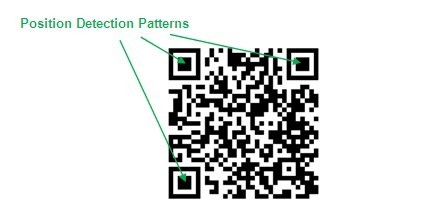The increasing popularity of LED displays in advertising has opened up exciting opportunities for interactive marketing campaigns. QR codes, in particular, have proven to be highly effective tools for engaging audiences on LED billboards and screens. However, successfully integrating QR codes with LED displays requires overcoming certain technological hurdles. This article delves into the challenges and solutions for optimizing Qr Code Led display integration.
Challenges of QR Code Scannability on LED Displays
Several factors can hinder the scannability of QR codes displayed on LED screens. These issues often stem from limitations in the display technology itself.
Position Detection Pattern Failures
QR codes rely on position detection patterns located in three of their four corners. These patterns enable omnidirectional scanning. However, if the LED display’s refresh rate is too low, these patterns can become blurred or distorted, making it difficult for smartphone cameras to recognize them. This is particularly problematic with indoor LED displays, which often have lower refresh rates than their outdoor counterparts.
Fig. 1: The crucial position detection patterns of a standard QR code.
QR Code Module Distortion
Two primary factors contribute to module distortion: insufficient grayscale and improper image scaling. If an LED display lacks a high grayscale capability (e.g., less than 14-bit), the subtle color variations within the QR code modules may be lost, leading to distortion. Similarly, if the display’s video processor doesn’t handle image scaling correctly, the modules can become stretched or compressed, further impeding scannability.
Fig. 2: Distortion of QR code modules due to improper image scaling.
QR Code Performance with Different LED Driver ICs
LED displays utilize different types of driver ICs, which significantly impact their performance. Typical driver ICs often require trade-offs between brightness, refresh rate, and grayscale. This can severely limit the effectiveness of QR code LED displays.
Typical Driver ICs: Performance Compromises
In brightly lit environments, LED displays are often operated in high brightness mode. However, this typically comes at the cost of reduced refresh rate and grayscale, leading to QR code scanning failures. Experiments with typical driver ICs demonstrate these challenges. In high refresh rate mode, the QR code’s position detection patterns often blend into the background, making scanning difficult. Conversely, in high grayscale mode, the lower refresh rate can result in noticeable black stripes, again hindering scanning.
Fig. 3: QR code displayed on an LED screen with a typical driver IC in high refresh rate mode. Note the poor grayscale and blending of position detection patterns.
Fig. 4: QR code displayed on an LED screen with a typical driver IC in high grayscale mode. The black stripes due to low refresh rate are evident.
S-PWM Driver ICs: A Solution for QR Code LED Displays
Macroblock’s S-PWM driver IC technology offers a solution to these challenges. S-PWM allows for simultaneous high grayscale, high refresh rate (over 500Hz indoors, over 1000Hz outdoors), and high brightness. This eliminates the need for compromises and ensures clear, scannable QR code LED displays. Tests with S-PWM driver ICs demonstrate consistently successful and rapid QR code scanning.
Fig. 5: Successful QR code scan on an LED display powered by Macroblock’s S-PWM driver IC. The image is clear, with high grayscale and refresh rate.
Conclusion
For effective QR code LED display integration, choosing the right driver IC is crucial. S-PWM technology provides the necessary performance characteristics to ensure seamless scanning and a positive user experience. This allows advertisers to fully leverage the potential of QR codes for interactive marketing on LED displays.

